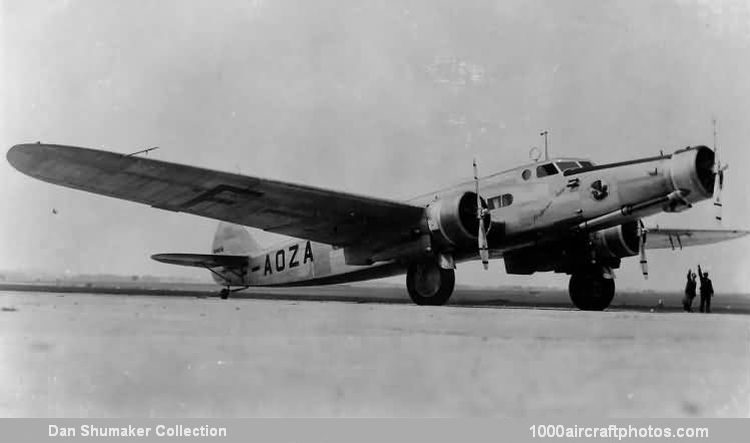The D.332 was followed by three eight- to ten-passenger D.333s which had increased wing area and greater maximum weight. The D.333s were required for the Toulouse-Dakar sector of the South America route. The first, named Antares, was lost on that route in October 1937 and the other two were transferred to South America.
SABENA had planned to use a D.335 on its Brussels-Malmö services but it was not built and the next type to appear was the D.338. Powered by 650 hp Hispano-Suiza 9V 16/17 radials, this was first flown on August 9, 1935 by Marcel Doret and his crew. It was slightly bigger than the earlier designs, heavier, and faster. The D.338 was essentially similar to the D.333 but had a longer fuselage, with accommodation for up to 22 passengers. In addition, its main wheels retracted into the engine nacelles whereas the D.332 and D.333s had non-retractable landing gears with large streamlined fairings.
On June 29, 1936, the D.338 prototype went into operational service with Air France, registered F-AOZA. Air France soon ordered another 21, later increased to 29, requiring them for European, Far Eastern and South American services. The prototype went into service on the Paris-Marseilles-Cannes route in the summer of 1936, the first production aircraft flew in August 1937 and ten had been delivered by June 1938. It was a D.338 which opened Air France's Paris to Hong Kong service in August 1938.
For a short time after the start of WW II D.338s were operating the Paris to London (Heston) service. Two were at Beirut when the Franco-German Armistice was signed and these were used for military transport between Beirut and the French Congo. Nine D.338s survived the war and Air France still had eight in December 1946. In Europe the D.338s had 22 seats, on African services fifteen and on the Far East route twelve including six sleeper-seats.
The pictured D.338 prototype was destroyed at Toulouse by a raid of the RAF during the night from April 4 to 5, 1944."
The following data relate to the D.338.
